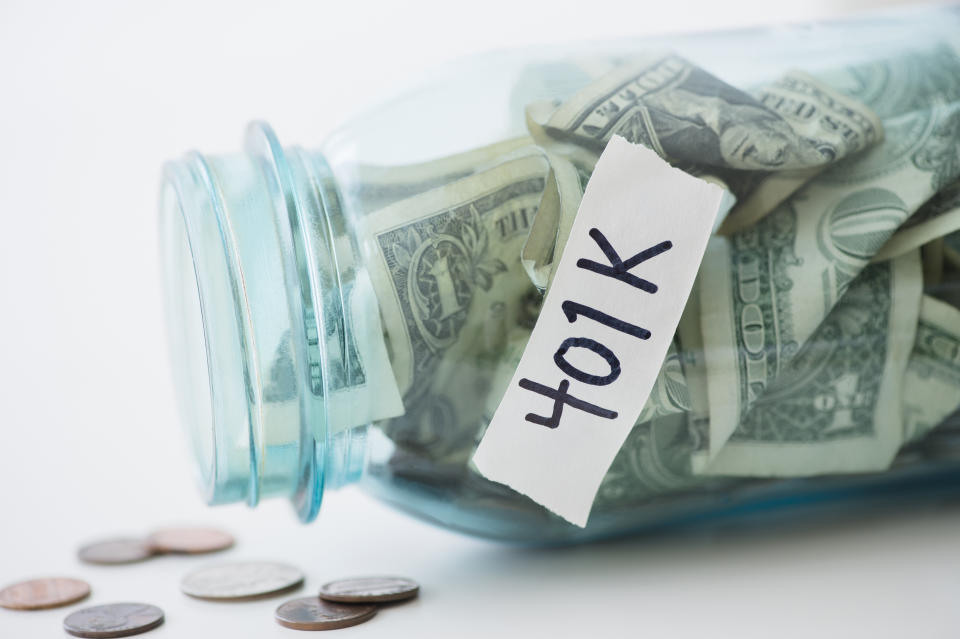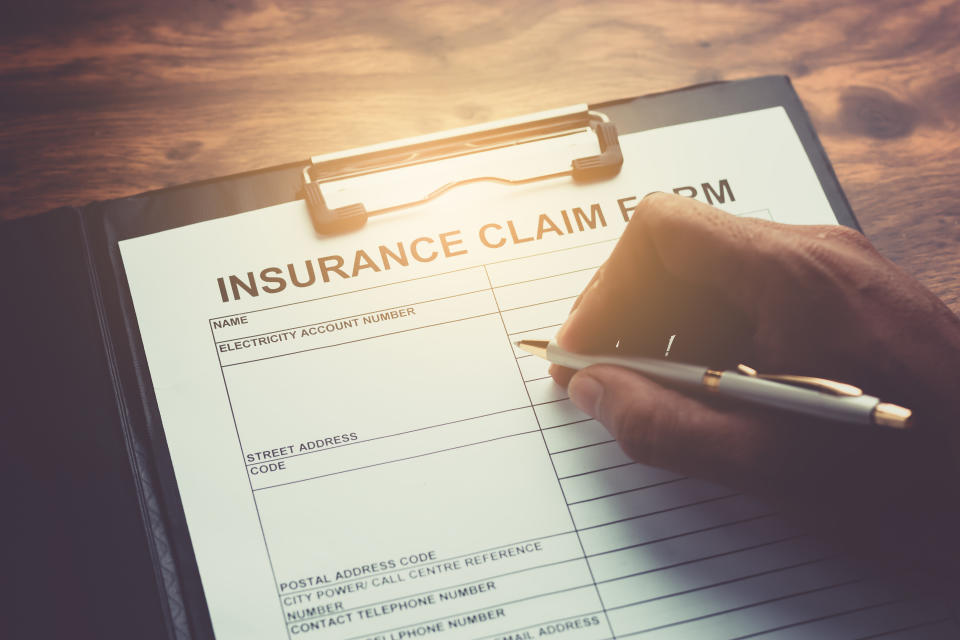You Can Borrow From Your 401(k) With No Penalty ― But Should You?
Now that the Federal Reserve has cut interest rates again, things are looking up for prospective homeowners. Mortgage rates are on their way back down, making now a prime time to become a homeowner. The only problem? You might not have the cash on hand for a down payment.
Your own retirement savings could be the solution. A 401(k) loan allows you to borrow money to buy a house ― or for just about any other reason ― without going through a credit check or paying an early withdrawal penalty. But is borrowing against your 401(k) as smart as it seems? Maybe not.
401(k) Loan Rules
Usually, the money in your 401(k) shouldn’t be touched until you reach a certain age (which ranges from 55 to 70 1/2, depending on the circumstances). If you do withdraw money from your 401(k) early, you are forced to pay a 10% penalty, plus pay taxes on the distribution. Not to mention, you lose out on years’ worth of investment returns on that money.
However, there are some instances when you’re allowed to pull funds from your account and at least avoid the penalty ― if your employer allows it.
For instance, you can take a hardship withdrawal if you’re facing certain types of major financial difficulty. This is money that doesn’t need to be repaid, though you’re still expected to pay income taxes on it. The IRS stipulates that the hardship must be an “immediate and heavy financial need,” such as paying for qualifying medical or education expenses. And the amount you can withdraw is limited to only the amount necessary to satisfy that need, so it’s not exactly an easy way to get quick cash.
In some other cases, you can borrow against your 401(k) instead. Unlike a hardship withdrawal, you can take out a 401(k) loan for just about any reason.
Again, not all employers permit this, but those that do typically allow you to borrow up to 50% of the vested balance or $50,000, whichever amount is less, explained Danny G. Michael, a certified financial planner at Satori Wealth Management in Southern California. You’re required to pay the loan back, with interest, via automatic deductions from your paycheck, he said.
The good news is that you don’t have to pay a penalty or taxes on the withdrawal as long as it’s repaid according to the loan rules and timeline. Generally, you have up to five years to repay the loan ― longer if it’s for purchasing a primary residence.
Advantages Of Borrowing Against Your 401(k)
So why borrow money from your 401(k) instead of a more traditional source, such as a credit card or personal loan?
For one, there’s no credit check required. Plus, 401(k) loan interest rates tend to be very low ― typically one to two points higher than the prime rate, which is currently 5.25%. This makes it a good opportunity to not only borrow money at a low cost, but also consolidate existing high-interest debt. “In most instances, the interest rate is lower than what [the borrower] is paying on existing debt,” said Sidney R. Divine, a certified financial planner and owner of Divine Wealth Strategies in Atlanta.
Additionally, the interest you pay on the loan is actually paid back to your 401(k) balance, along with your principal payments. “Not only is the interest rate typically lower than most public financing sources, but you are essentially paying interest to yourself, not a financial institution,” Michael said.
Beware The Risks Of 401(k) Loans
Though borrowing from you 401(k) when you’re in need of a loan might seem like a no-brainer, there a several significant downsides to this option. In fact, they make borrowing from your 401(k) almost never worth it.
To start, if you lose your job, you’re screwed. Once you leave your employer, the entire loan balance becomes due. “If you can’t pay off the balance with a lump sum, you may owe income tax and additional early withdrawal penalties on the unpaid balance,” said Justin Pritchard, a certified financial planner and owner of Approach Financial in Montrose, Colorado. He noted that recent tax law changes have made it slightly easier to deal with an unpaid balance, but that doesn’t change the fact that you need to come up with the entire unpaid portion of your loan by your tax filing deadline. “Most people can’t do that ― that’s why they got a loan in the first place,” he said.
Then there’s the opportunity cost of removing your retirement savings from the market. Unless you borrow from your 401(k) just before a major market correction (such as the crash in 2008), that’s a loss you’ll probably never fully make up. And not only do you miss out on compound earnings on your own contributions, but employers often reduce or stop 401(k) matches until the loan is repaid as well.
Michael also pointed out that the loan, which is made up of pre-tax contributions, is repaid with after-tax dollars. So if you’re taxed at an effective rate of 18%, you would need to earn $118 to pay back each $100 borrowed. When it comes time to make withdrawals in retirement, the distributions are then taxed as income, resulting in a double-taxation of the 401(k) funds you borrowed previously.
Plus, you might not be able to borrow the full amount you need ― if at all. “That’s especially true if you’re not 100% vested in your 401(k) plan, making for an unpleasant surprise when you need money and you pin your hopes on your 401(k),” Pritchard said. For example, if your account is worth $100,000, but you’re only 50% vested, the maximum you can borrow is $25,000 ― not the full $50,000. Pritchard added that 401(k) loans are an optional benefit, and some employers choose not to offer them in order to avoid the administrative complexities of dealing with them or to prevent employees from raiding their retirement savings.
Borrow With Caution
So does this mean you should never borrow against your 401(k)? Not necessarily.
For instance, Divine has recommended that some of his clients borrow from their 401(k)s when cash flow was hampered by other high-interest debt. “If the client has done a great job of saving, has job security and could benefit by having some funds freed up, it’s a workable strategy,” he said.
Michael noted that a friend is currently looking to purchase a new home, but most of his net worth is tied up in his existing primary residence. So he plants to supplement the down payment by borrowing from his 401(k). “Once he closes on the new home and sells his current home, he can repay both loans with the equity from the sale,” Michael said. Again, this is a solid strategy, assuming all his other financial ducks are in a row.
The bottom line is that borrowing against your 401(k) should be a last resort, but there are circumstances when it makes sense. Ideally, 401(k) loans should be used to address short-term cash flow needs, not as a crutch to ignore larger financial issues.
Related coverage
The Best And Worst Ways To Use Home Equity, According To Experts
Phony Financial Experts Keep Popping Up All Over The Internet. Here's How To Spot Them.
How To Recession-Proof Your Finances
Also on HuffPost
Roll Over Your Old 401(k)

Switch Banks

Negotiate With Your Internet Provider

Complete A Health Assessment

Sign Up For Auto-Pay

Rethink Your Health Insurance

Skim Your Bank Statements

Listen To A Personal Finance Podcast

Switch To A Prepaid Cellphone Plan

Set It And Forget It

Love HuffPost? Become a founding member of HuffPost Plus today.
This article originally appeared on HuffPost.

